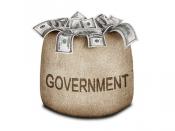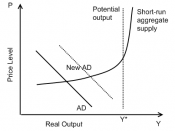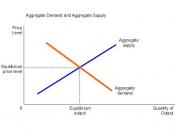Economics- the study of how to use our limited resources (L, L C & E) wisely to help make society and individuals better off.
Land- natural gifts of nature
Labour- various intellectual talents as well as physical power provided by labour force
Capital- the money needed to produce
Entrepreneurship- the idea or ability to create the production, its people employed to think
There are two branches of economics:
Microeconomics: factors that influence smaller parts of the Australian economy.
Macroeconomics: looks at the whole nation; birds eye view of the economy for a country.
Interest rate- the cost of borrowing money
The problem with relative scarcity refers to the face that there are not enough resources to satisfy society's unlimited wants.
The opportunity cost of producing an item is the cost (lost) in not producing the next best item.
Here we see that if this producer is in a market that thrives in he usage of guns yet not much butter then he would be advised by entrepreneurs to enter his L, L & C into the production of butter, as there is more demand and not as much supply.
This is seen as microeconomics.
The PPF is the Possibility Production Frontier; it represents the maximum output that can be achieved. To increase the output in an economy you lower opportunity cost.
There are 4 main types of economic systems
Decision making
Planned Capitalism- Governments control markets to an extent & set what they want sold although money is still retained within the private system (products owned by private businesses.) This would seem to be the worst market system for consumers.
Planned Socialism- The government plan what they want sold and how they want it sold. In addition socialism makes sure that state own all enterprise. This would seem to be...


